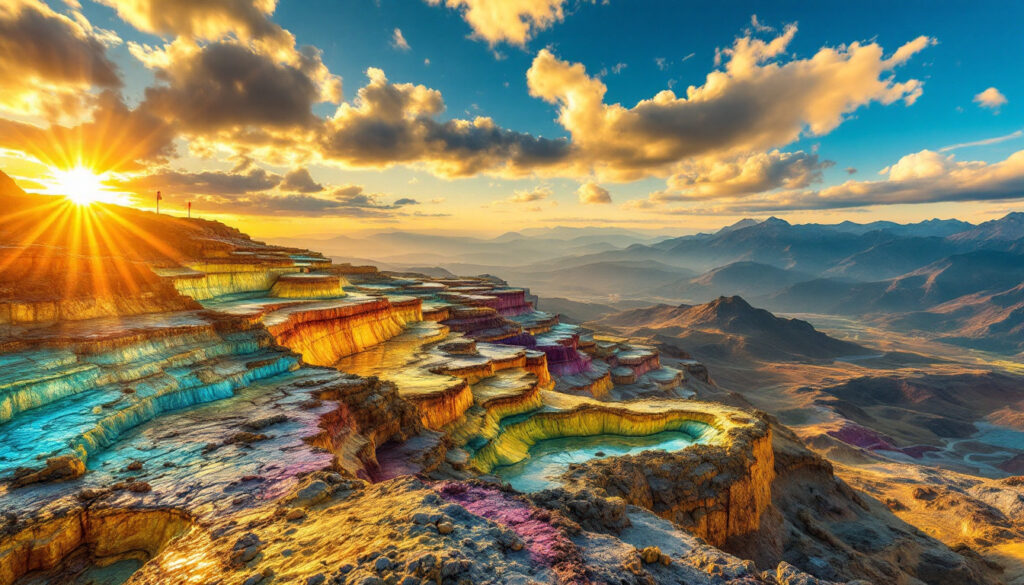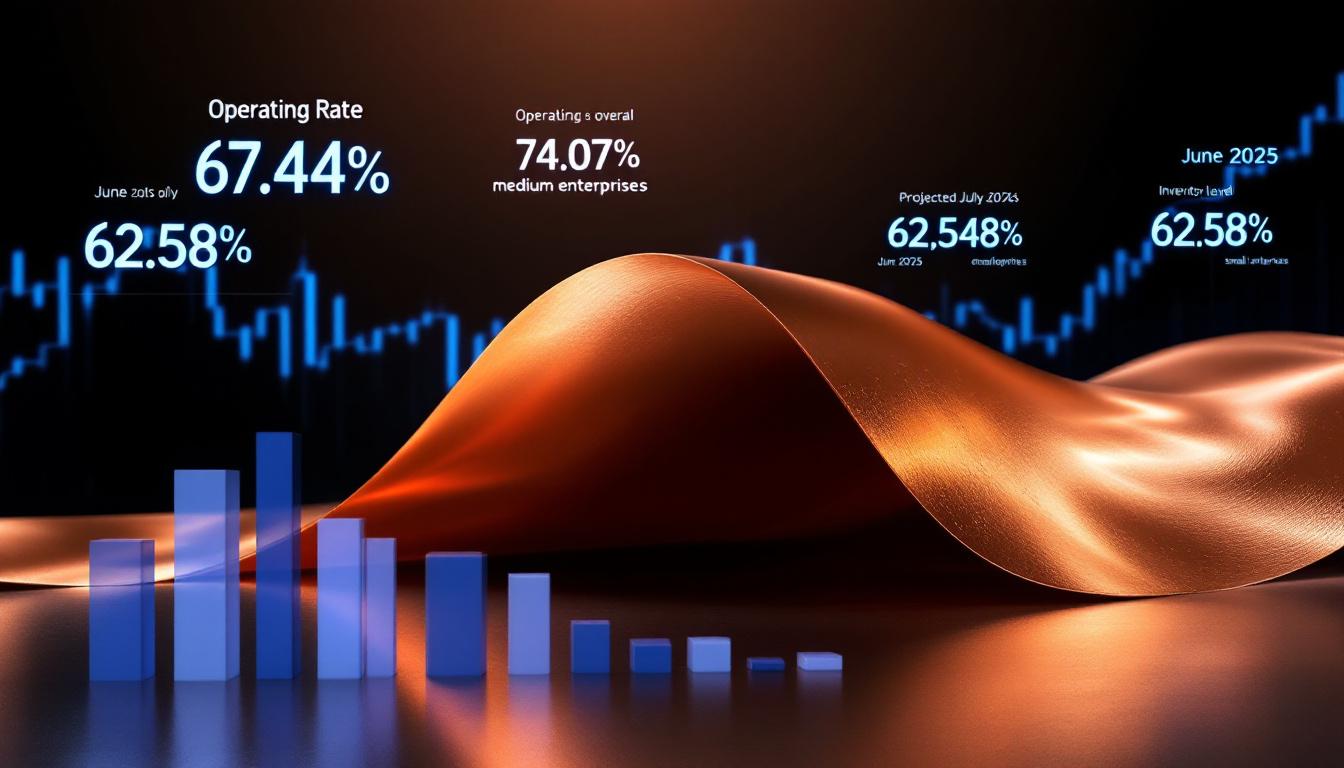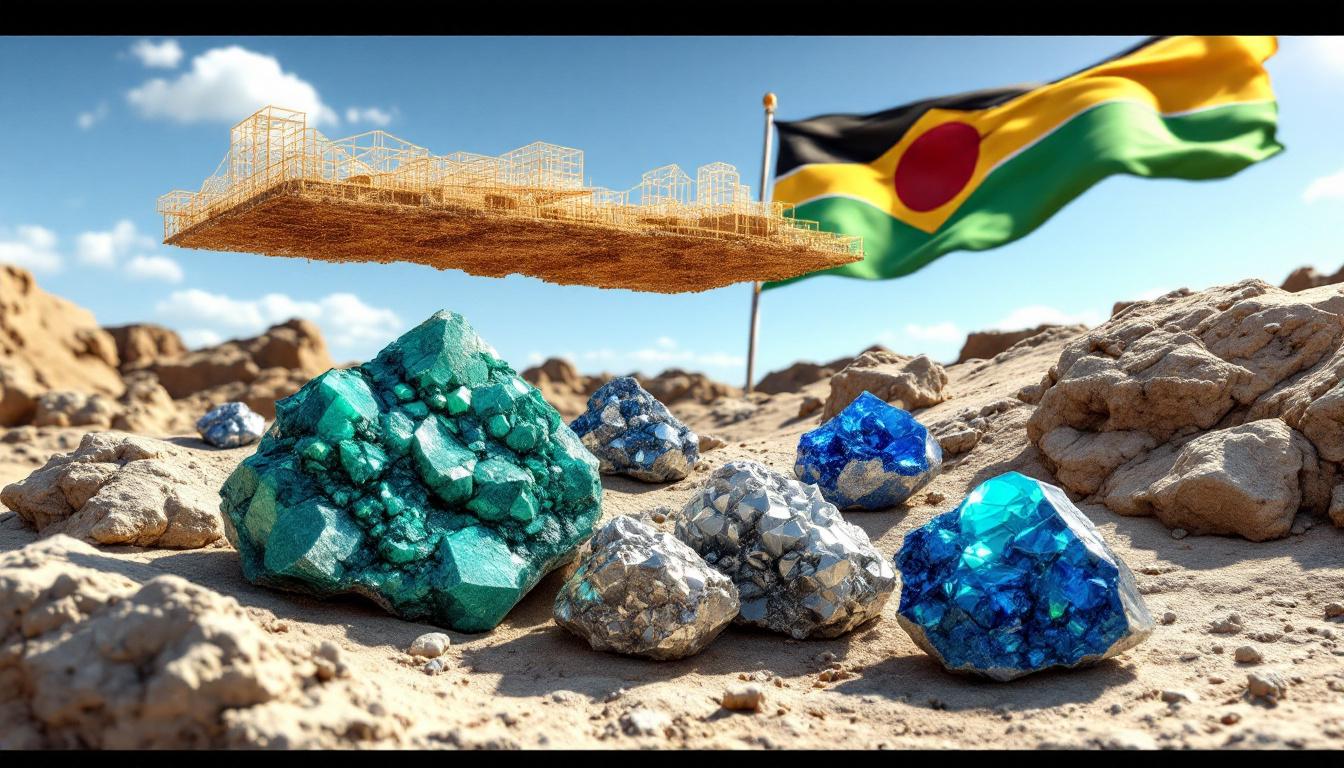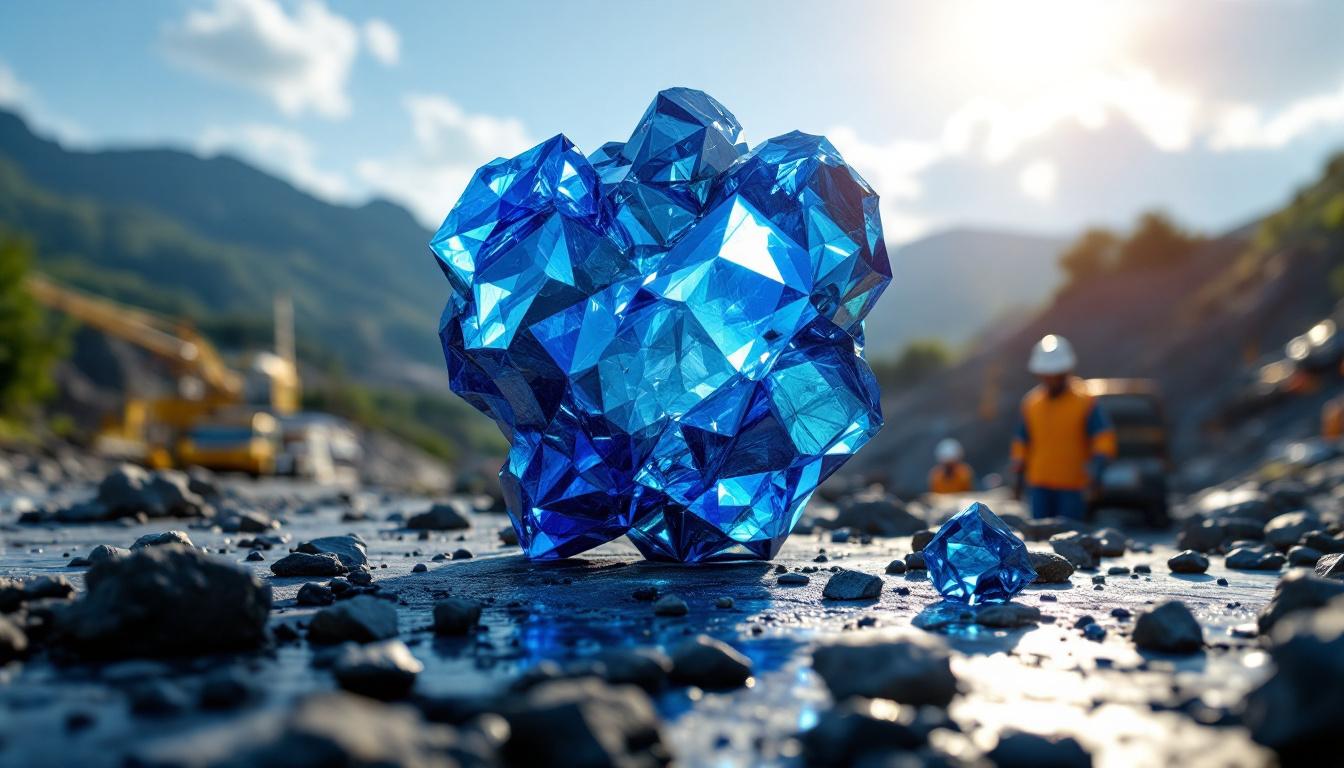Copper and Gold Giants in the Tethyan Belt: A Geological Treasure Trove
The Tethyan Belt stands as one of Earth's most significant metallogenic belts, extending thousands of kilometers from Europe through the Middle East and the Himalayas into Southeast Asia. This remarkable geological feature formed through the complex closure of the ancient Tethys Ocean, followed by continental collisions that reshaped vast portions of Eurasia. Rich in copper and gold giants in the tethyan belt, this region represents a critical component of global metal supply chains and offers exceptional opportunities for mineral exploration and development.
What is the Tethyan Belt?
The Tethyan Belt represents a massive geological structure resulting from complex tectonic processes that occurred over millions of years. As the ancient Tethys Ocean closed through subduction and continental collision, it created ideal conditions for mineral formation through magmatic activity, hydrothermal circulation, and metamorphic processes.
This extensive belt traverses multiple continents and dozens of countries, creating a continuous corridor of mineral wealth from Western Europe to Southeast Asia. The geology of ore deposits within the belt has produced an extraordinary range of deposit types, with porphyry copper-gold systems being particularly prevalent and economically significant.
The formation of the Tethyan Belt involved several distinct tectonic phases, beginning with oceanic subduction that generated magmatic arcs rich in copper and gold. Subsequent continental collision created compressional environments favorable for remobilizing metals and concentrating them in economic deposits. These complex processes have resulted in multiple mineralization styles, including world-class porphyry systems, epithermal deposits, skarn formations, and various other deposit types.
What Makes the Tethyan Belt a World-Class Mineral Province?
The exceptional concentration of copper and gold deposits sets the Tethyan Belt apart from many other metallogenic provinces globally. The belt hosts numerous giant deposits containing billions of dollars worth of metals, often occurring in porphyry systems where copper and gold are found together in economically extractable concentrations.
Among the belt's most impressive copper resources are deposits like Skouries in Greece, which contains over 5 million tonnes of copper alongside significant gold values. The Majdanpek and Bor mining districts in Serbia have been producing copper for decades, with reserves still estimated in the millions of tonnes. Turkey's Kışladağ represents another major deposit, while Iran hosts two world-class porphyry systems at Sar Cheshmeh and Sungun, each containing over 5 million tonnes of copper.
The gold endowment of the Tethyan Belt is equally impressive. Romania's Roșia Montană contains more than 10 million ounces of gold, making it one of Europe's largest gold deposits. Turkey's Çöpler mine has exceeded expectations with over 5 million ounces of gold resources, demonstrating the belt's potential for hosting precious metals.
Several remarkable copper and gold giants in the tethyan belt highlight the polymetallic nature of the region. Pakistan's Reko Diq stands as one of the most significant undeveloped copper-gold projects globally, with estimated resources exceeding 12 million tonnes of copper and 20 million ounces of gold. Turkey's Hot Maden represents a high-grade discovery, while Slovakia's historical Banská Štiavnica district demonstrates the long mining heritage throughout the belt.
Beyond Copper and Gold: The Belt's Diverse Mineral Wealth
While copper and gold rightfully capture attention as the belt's headline commodities, the Tethyan Belt's complex geology has generated an impressive diversity of valuable mineral deposits that contribute significantly to global supply chains.
Throughout the Tethyan Belt, lead, zinc, and silver deposits occur in abundance, typically in epithermal vein systems and carbonate replacement-type deposits. These base and precious metal accumulations often develop alongside or above copper-gold porphyry systems, creating vertically zoned mineral districts with diverse extraction potential. The polymetallic nature of these deposits enhances their economic viability, as multiple metals can be recovered from single mining operations.
The belt also hosts critical industrial minerals vital to manufacturing and technology sectors. Chromium deposits associated with ophiolite sequences—ancient oceanic crust thrust onto continental margins—provide essential inputs for stainless steel production. Turkey stands out for its remarkable boron resources, controlling a majority of global reserves of this element used in ceramics, glass manufacturing, and advanced materials.
Additional significant mineral resources within the belt include bauxite (the primary aluminum ore), phosphate deposits essential for agricultural fertilizers, potash for crop nutrients, manganese used in steel production, and strategic metals like antimony and uranium. This diverse mineral portfolio makes the Tethyan Belt a crucial supplier for numerous industries beyond the typical focus on precious and base metals.
Where Are the Most Promising Exploration Targets?
Despite centuries of mining activity dating back to Roman times and earlier, large portions of the Tethyan Belt remain substantially underexplored using modern techniques. This presents significant opportunities for new discoveries in regions that have seen limited systematic exploration with contemporary technologies.
Eastern Europe represents one high-potential frontier, where post-Soviet nations have increasingly opened to international investment in the mineral sector. Underexplored portions of countries like Romania, Bulgaria, and Serbia offer promising geology with modern exploration coverage that lags behind similar terranes elsewhere in the world.
Pakistan's segment of the Tethyan Belt remains particularly underexplored relative to its mineral potential. Recent geophysical surveys have identified numerous targets with signatures similar to known large-scale deposits, yet follow-up drilling has been limited. The country's evolving regulatory framework aims to attract investment to unlock this potential, as detailed in the Pakistan's mineral wealth investment outlook.
Parts of Turkey, despite hosting several major mines, contain frontier areas where rugged terrain and historical access limitations have restricted exploration. Remote sensing and advanced geophysical surveys are gradually revealing the potential of these regions.
Exploration efforts across the belt increasingly focus on porphyry copper-gold systems, which offer the scale needed for major mining operations. Epithermal gold deposits represent another prime target, particularly in volcanic arc settings. Growing demand for critical minerals essential for modern technology has also directed attention toward elements like tellurium, indium, and rare earth elements found in specialized deposits throughout the belt.
The accelerating global energy transition has heightened interest in metals required for renewable energy infrastructure and battery storage, positioning the Tethyan Belt as a strategic source for copper, nickel, cobalt, and other energy transition metals. This shift has spurred significant interest in investing in mining stocks focused on Tethyan exploration.
How Is Pakistan Positioned Within the Tethyan Belt?
Pakistan occupies a strategically significant position within the Tethyan Belt, hosting some of the most promising yet underdeveloped mineral resources in the entire metallogenic province.
The country's mineral endowment features the world-class Reko Diq copper-gold deposit in Balochistan province, representing one of the largest undeveloped copper projects globally. With estimated resources exceeding 12 million tonnes of contained copper and 20 million ounces of gold, this single deposit demonstrates Pakistan's extraordinary mineral potential.
Pakistan contains diverse geological terranes spanning multiple tectonic domains within the Tethyan Belt. From the Chagai Arc hosting Reko Diq to the northern collision zones where the Indian plate meets Eurasia, the country encompasses varied geological environments favorable for different deposit types. This geological diversity creates exploration potential for not only copper and gold but also chromite, lead-zinc, and various industrial minerals.
Despite its rich endowment, Pakistan remains significantly underexplored compared to other segments of the Tethyan Belt. Political instability, security concerns, and infrastructural challenges have historically limited systematic exploration using modern techniques. However, recent government initiatives aim to address these barriers and attract international investment.
The Pakistan Minerals Investment Forum 2025 (PMIF25) represents a flagship initiative to showcase the country's mineral potential to international investors. Scheduled for April 8-9, 2025, at the Jinnah Convention Centre in Islamabad, this event highlights Pakistan's commitment to developing its mineral sector as a pillar of economic growth.
The forum places particular emphasis on critical minerals essential for future-facing technologies and supply chains. As global concerns about mineral security intensify, Pakistan's position within the Tethyan Belt offers potential alternative supply sources for minerals currently dominated by a limited number of producing countries.
FAQ: Understanding the Tethyan Belt
What types of deposits are most common in the Tethyan Belt?
Porphyry copper-gold deposits represent the most economically significant deposit type throughout the Tethyan Belt. These large-volume, moderate-grade systems form from magmatic-hydrothermal fluids associated with subduction-related igneous activity. Epithermal gold-silver deposits frequently develop in the upper portions of these systems, creating vertically zoned metal districts.
While these deposit types dominate production value, the belt hosts numerous other mineralization styles, including skarn deposits at igneous-carbonate contacts, volcanogenic massive sulfide deposits formed on ancient seafloors, and orogenic gold systems developed during mountain-building episodes. This diversity of deposit types reflects the complex geological evolution of the Tethyan Belt through different tectonic regimes.
Why is the Tethyan Belt important for future mineral supply?
The Tethyan Belt holds critical importance for future mineral supply chains due to its vast yet underdeveloped resource potential, particularly in regions that have seen limited modern exploration. As demand rises for both traditional industrial metals and critical minerals essential for the energy transition, the belt offers significant opportunities for new discoveries.
The geological nature of the belt favors the formation of large-scale deposits capable of supporting major mining operations with decades-long production profiles. This scale potential proves particularly important for metals like copper, where individual operations must produce substantial volumes to impact global supply.
Additionally, the belt's polymetallic nature means that many deposits contain valuable by-products that enhance economic viability while providing sources of critical minerals that might otherwise require dedicated mining operations. This efficiency in recovering multiple metals from single deposits aligns with growing sustainability concerns in the mining sector. Furthermore, recent gold market analysis suggests continued strong demand for gold from Tethyan deposits.
How does the Tethyan Belt compare to other major metallogenic provinces?
The Tethyan Belt ranks among the world's most important mineral provinces alongside the Andean Copper Belt of South America and the Central Asian Orogenic Belt. While the Andean Belt currently dominates global copper production, the Tethyan Belt offers comparable geological potential with less exhaustive exploration coverage.
What distinguishes the Tethyan Belt is its exceptional copper and gold giants in the tethyan belt, with many deposits containing significant concentrations of both metals. This polymetallic nature often creates superior economics compared to single-metal deposits, as gold credits substantially enhance the value of copper operations.
The Tethyan Belt also shows remarkable continuity across multiple continents, creating exploration opportunities in varied jurisdictions. This geographical diversity allows companies to manage geopolitical risk by developing portfolios spanning multiple countries within the same metallogenic province.
What challenges exist in developing Tethyan Belt resources?
Development challenges across the Tethyan Belt include complex geopolitics spanning dozens of countries with varying levels of political stability and security conditions. Conflict zones and border disputes in certain segments of the belt have historically limited exploration and development activities.
Regulatory environments vary dramatically across the belt, from EU member states with stringent environmental protocols to developing nations with evolving mining codes. This regulatory diversity creates compliance challenges for companies operating across multiple jurisdictions within the belt.
Infrastructure limitations present significant hurdles in remote areas, particularly in mountainous regions with challenging terrain. Many high-potential exploration targets lie in areas requiring substantial investment in road access, power generation, and water management systems before development can proceed.
The growing emphasis on sustainable mining practices creates both challenges and opportunities. While environmental and social license requirements have become more stringent, companies that successfully implement responsible mining approaches can gain competitive advantages in accessing resources and securing project approval throughout the Tethyan Belt. This has led to increased importance of thorough mining feasibility studies and implementation of digital transformation in mining operations.
Want to Discover the Next Big Mineral Opportunity?
Stay ahead of the market with instant alerts on significant ASX mineral discoveries through Discovery Alert's proprietary Discovery IQ model, turning complex mineral data into actionable investment insights. Begin your 30-day free trial today at Discovery Alert and position yourself to capitalise on the next major discovery before the broader market responds.




